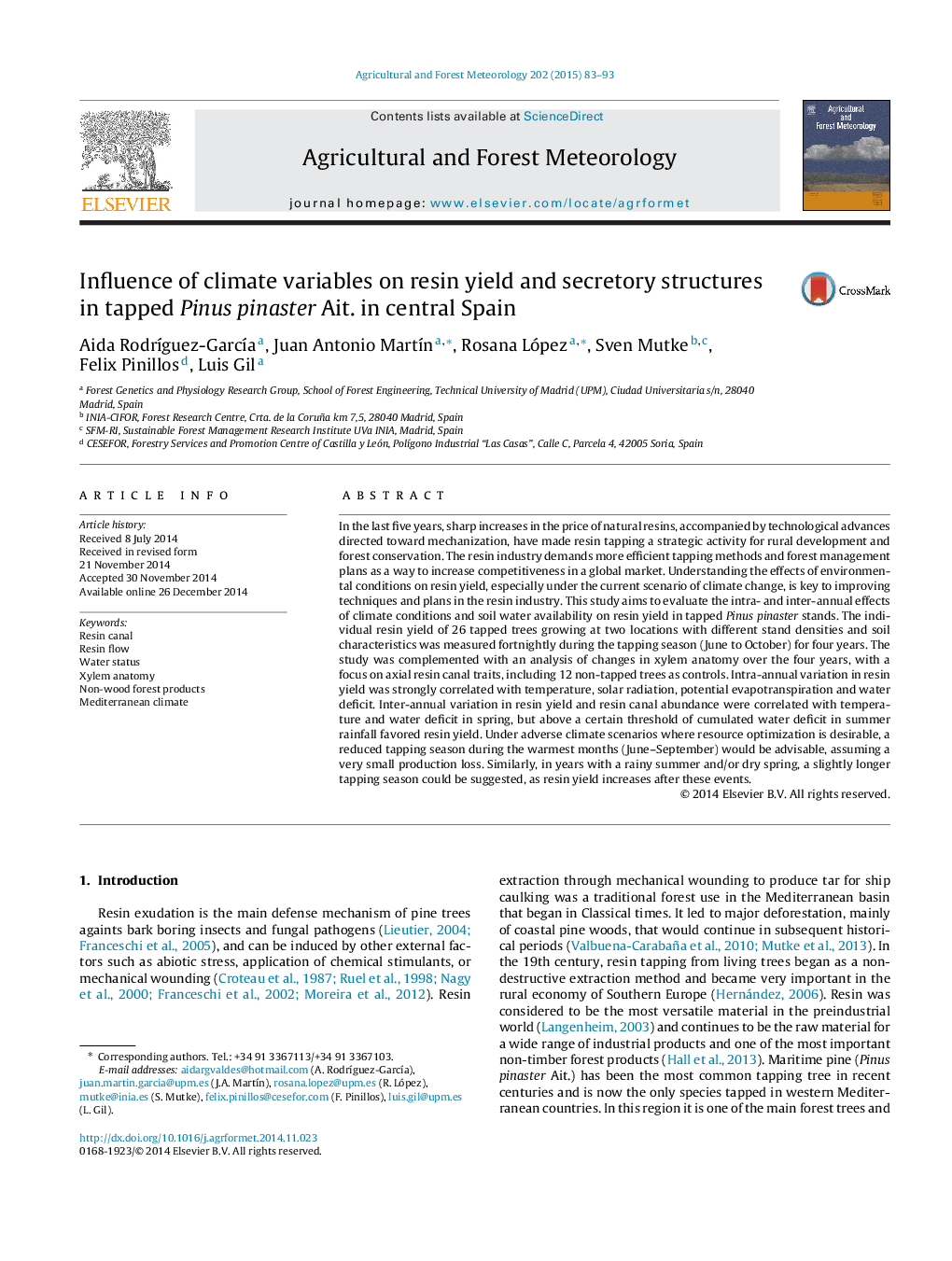| کد مقاله | کد نشریه | سال انتشار | مقاله انگلیسی | نسخه تمام متن |
|---|---|---|---|---|
| 81571 | 158325 | 2015 | 11 صفحه PDF | دانلود رایگان |

• The role of climate and soil water availability on resin yield was evaluated.
• Resin yield increased with temperature, radiation and evapotranspiration values.
• Resin yield and axial canal size were correlated with water deficit in spring.
• Above a certain threshold of cumulated water deficit, summer rainfall favored resin yield.
• Stand density and soil quality affected the relations between climate and resin yield.
In the last five years, sharp increases in the price of natural resins, accompanied by technological advances directed toward mechanization, have made resin tapping a strategic activity for rural development and forest conservation. The resin industry demands more efficient tapping methods and forest management plans as a way to increase competitiveness in a global market. Understanding the effects of environmental conditions on resin yield, especially under the current scenario of climate change, is key to improving techniques and plans in the resin industry. This study aims to evaluate the intra- and inter-annual effects of climate conditions and soil water availability on resin yield in tapped Pinus pinaster stands. The individual resin yield of 26 tapped trees growing at two locations with different stand densities and soil characteristics was measured fortnightly during the tapping season (June to October) for four years. The study was complemented with an analysis of changes in xylem anatomy over the four years, with a focus on axial resin canal traits, including 12 non-tapped trees as controls. Intra-annual variation in resin yield was strongly correlated with temperature, solar radiation, potential evapotranspiration and water deficit. Inter-annual variation in resin yield and resin canal abundance were correlated with temperature and water deficit in spring, but above a certain threshold of cumulated water deficit in summer rainfall favored resin yield. Under adverse climate scenarios where resource optimization is desirable, a reduced tapping season during the warmest months (June–September) would be advisable, assuming a very small production loss. Similarly, in years with a rainy summer and/or dry spring, a slightly longer tapping season could be suggested, as resin yield increases after these events.
Journal: Agricultural and Forest Meteorology - Volume 202, 15 March 2015, Pages 83–93